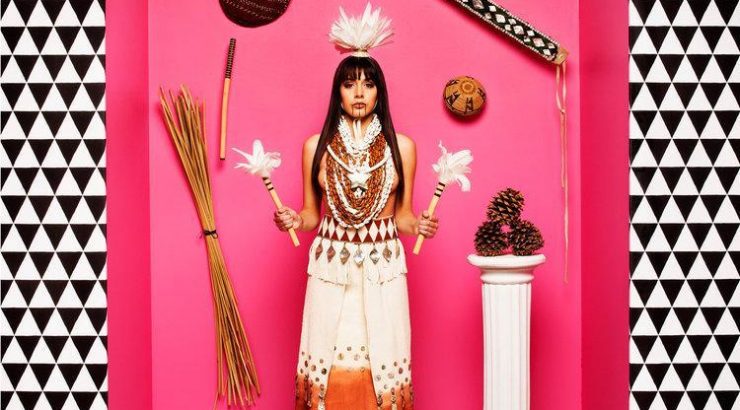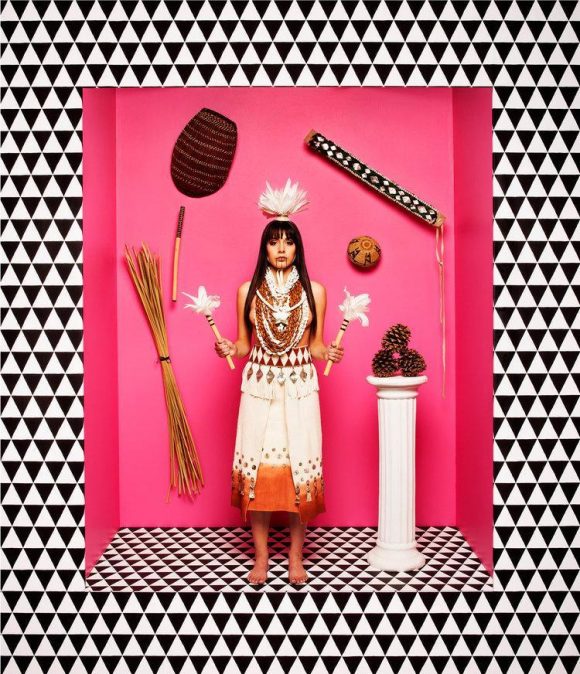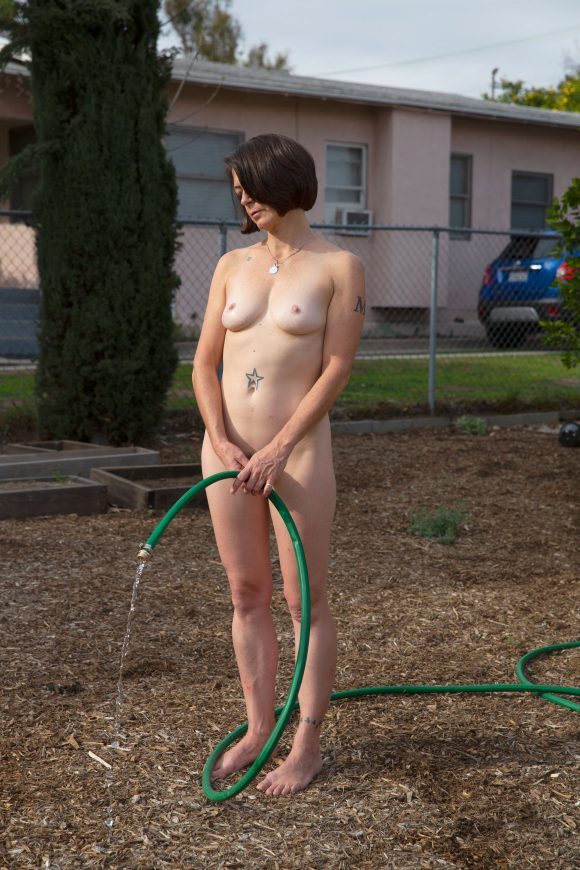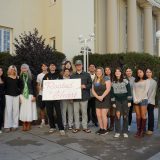
Challenging the Male Gaze Women Artists Reclaiming Representation
March 14, 2022
Have you ever heard the phrase “male gaze”? It was first coined in 1975 by film critic Laura Mulvey to describe how women are represented in visual arts and literature. She noticed that in movies, advertisements, literature, art, etc., women were often presented as objects of pleasure for heterosexual male viewers. This pattern reinforces a power structure in which men control how women are represented and valued in society. The male gaze can be seen throughout art history where male artists – who are much more likely to be accepted into the “canon” or the group of artists who represent the ideal standard in art – depict the female body. In honor of Women’s History Month, the Escalette Collection of Art highlights three artists in the collection who challenge the male gaze and celebrate women representing themselves on their own terms.
Cara Romero
Cara Romero is a photographer and member of the Chemehuevi Indian Tribe. As an undergraduate student, Cara became disillusioned by how Native Americans were represented as static and extinct peoples in her anthropology classes. She later became an artist to combat these inaccuracies and share the rich, diverse experiences of Native Americans today.

Cara Romero, Naomi, photograph printed on Legacy Platine paper, 2017. Purchased with funds from the Ellingson Family.
“I am deeply committed to making work that addresses Native American social issues and changes the way people perceive Native Americans, especially Native women, in contemporary society. If we want respect, love, and beauty among us and other, we must actively promote it through our art.” – Cara Romero
This photograph is from her First American Girl series, in which Cara constructs life-sized doll boxes featuring Native women and cultural “accessories.” The idea for this series came from the often culturally insensitive and unnuanced Native American dolls she saw sold in stores across America. This problem of representation became especially apparent to her after having a daughter and realizing how few dolls looked like her. As an act of resistance and empowerment, Cara creates her own doll campaign, fitted with accurate dress and cultural items. By placing the woman among these pre-colonial objects, Cara demonstrates that “through all odds, genocide, colonization, and resistance, she still carries the knowledge to make those things.” While referencing history, it was important to Cara that these photographs have a decidedly modern appearance; using bright colors and contemporary details, Cara fuses past and present to capture the vibrancy of Native American culture today.
Ruth Bernhard
Born in Berlin in 1905, Berlin moved to New York to pursue a career in photography. In 1953, she relocated to the West Coast and worked alongside several well-known male photographers including, Ansel Adams and Edward Weston. She photographed a myriad of subjects, ranging from Life Savers to dolls, but her true passion was photographing the female nude, stating, “the image of woman has been my mission.”

Ruth Bernhard, Perspective I, gelatin silver print, 1962. Purchased with funds from the Escalette Endowment.
“Men photograph a female nude as if she belonged to them. I photograph a woman as part of the universe.” – Ruth Bernhard
Bernhard’s approach to photographing women was clearly different from that of her male colleagues, whose work either represented women as idealized models or objects of desire. Bernhard studied and understood women, identifying with their lives and struggles. She found beauty in every body, which she allowed to shine through from within through her use of light. Despite being praised among photography circles, she, like many female artists at the time, remained relatively unknown for much of her career. It wasn’t until the 1970s when her work was rediscovered by the feminist photography movement that she finally began to receive the recognition she deserved.
Micol Hebron
Micol Hebron is a performance artist and professor at Chapman University. In her work, she seeks to challenge the way female-presenting bodies are viewed by society and prompt her viewers to question the imbalance between women as subjects and women as artists.

Micol Hebron, Domestic, Archival inkjet print, 2016. Purchased with funds from the Ellingson Family.
Domestic is part of a series called (In) Decent Exposure, in which Hebron uses her body as the medium, and in which she is “nude in public or semi-public places, doing very banal, everyday things – things that are not sexy,” such as watering her lawn or driving. Hebron questions the way female-presenting bodies are seen as sexual objects, regardless of the task the body is performing, such as lawn watering. She wants to get to a point where the naked body is not viewed as sexual or inappropriate, but merely as a body, as well as equality and autonomy for all bodies, no matter what they present as. The subject of Domestic is also meant to humorously reference photographs by Larry Sultan of life in the San Fernando Valley, several of which depict women watering their lawns with a hose.
Hebron is also the founder of the (en)Gendered (in)Equity: Gallery Tally Project, a collaborative project in which artists are invited to submit a poster that charts the male/female artist representation in galleries in Los Angeles and New York. The staggering results have helped bring attention to the systematic underrepresentation of women artists in the art market.
We invite you to explore all the works in the Escalette Collection by visiting our eMuseum.
Wilkinson College of Arts, Humanities, and Social Sciences is the proud home of the Phyllis and Ross Escalette Permanent Collection of Art. The Escalette Collection exists to inspire critical thinking, foster interdisciplinary discovery, and strengthen bonds with the community. Beyond its role in curating art in public spaces, the Escalette is a learning laboratory that offers diverse opportunities for student and engagement and research, and involvement with the wider community. The collection is free and open to the public to view.

